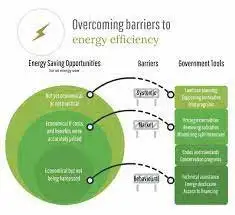Federal green strategy goes from bad to worse
You hear that sound? ThatÂ’s the sound of nearly half a billion taxpayer dollars landing on the doorstep of Atomic Energy Canada Ltd.
It includes the $300 million that showed up in the 2010 federal budget. That money will cover “anticipated commercial losses” and “continued development of the Advanced CANDU Reactor.” It will also help fund “safe and reliable operations at the Chalk River Laboratories.”
What was less visible was the $182 million that was squeezed into a supplementary estimate in the 2009 budget to address a cash shortfall caused by “unexpected technical challenges on Candu reactor refurbishment contracts.”
WeÂ’ve heard that one before.
Of that, about $72 million will go toward ongoing repair of an isotope-producing research reactor in Chalk River that has been shut down since May 2009. It brings the total for that fiscal year to more than $840 million. Over two years, weÂ’re talking more than $1.1 billion.
This, by the way, is “investment” in a crown corporation with a commercial business the federal government is planning to sell off. So far, the best guess is that Atomic Energy’s Candu operation won’t fetch more than $300 million. Not quite the return on investment Canadians deserve.
So here we are, federal budget 2010, and what does the federal Conservative government also do? It lets a hugely popular renewable energy incentive program die, and it lets a highly respect clean-technology funding agency run dry.
OttawaÂ’s ecoEnergy for Renewable Power program was launched in 2007 to create an incentive for developers of wind, solar, hydroelectric and geothermal power projects. The four-year program, backed with $1.48 billion in funding, paid out 1 cent per kilowatt-hour for the clean electricity generated from participating projects.
The 1-cent incentive recognized, in the absence of a price on carbon, the emission-free profile of this power. It proved successful, so much so that all the money has been allocated a year ahead of schedule and two years before similar U.S. support comes to an end.
The recent budget, however, failed to extend – let alone expand – the program. “We’re perplexed,” said Mark Rudolph, spokesman for the Clean Air Renewable Energy Coalition. Its 22 members, by the way, include Shell Canada, Suncor Energy, TransAlta, ConocoPhillips Canada, and Enbridge.
Rudolph said the throne speech talked about the need to become a clean energy superpower and lead in green job creation, but the government is moving in the opposite direction.
And nuclear power, he said, won’t achieve either objective in the near term. “There is nothing ‘shovel ready’ about investing in nuclear technology,” said Rudolph, pointing out the long timeframes required for regulatory approvals. “You can’t build a reactor in 10 years.”
Ontario will do okay. It has a feed-in-tariff program that will keep investment here. But for the rest of Canada, the federal incentive is much more important. Rudolph fears investors will take their money and jobs to the much more certain U.S. market.
Robert Hornung at the Canadian Wind Energy Association speculated that the federal government is downloading responsibility in this area onto the provincial governments.
“We are shocked and disappointed that it has chosen not to extend a cost-effective program that facilitated record levels of investment and job creation in Canada’s wind energy sector in the midst of the recession of 2009,” he said.
LetÂ’s remember that these wind projects stretched across Canada, creating a more equitable distribution of investment and jobs. Contrast that with the carbon capture and storage projects that have attracted $500 million in federal government investment over the past year just in Alberta.
Meanwhile, Ottawa-based clean technology funder Sustainable Development Technology Canada (SDTC) was shut out of the budget. The federal agency began its mission in 2002 with a $550 million fund thatÂ’s nearly empty. It has requested a refill so it can continue what many consider a vital mission.
For every dollar of public grant SDTC awards to a clean-technology project it requires that another $2.40 come from project partners. The result has been a flow of more than $1 billion into up-and-coming clean technology companies. These are job creators of the future that might otherwise shrivel on the vine.
SDTC still has $80 million in the bank, so for the most part 2010 will be business as usual. The agency has been told by the feds to wait patiently for the next budget in 2011. So what the market is left with is more uncertainty.
There were some welcome tidbits in the federal budget. It devoted $100 million over four years to help the forestry sector deploy clean technologies to become more efficient. It threw in another $80 million to support residential energy retrofits.
It also expanded the list of clean technologies that qualify for accelerated capital cost allowances, which is considered a major tax benefit for investors in new equipment. Equipment used in industrial heat recovery and in district energy systems now qualify.
Still, as the Pembina Institute points out, the United States plans to outspend Canada 14-to-1 per capita on renewable energy and 2-to-1 on energy efficiency in fiscal 2010. Even then, thereÂ’s concern by some south of the border that the United States isnÂ’t doing enough compared to China and some countries in Europe.
“It is through a failure to act that the United States will suffer economically,” according to a new report from the Center for American Progress, a liberal think-tank.
If the U.S. stands to suffer, then what does that mean for Canada?
Perhaps last weekÂ’s federal budget is being misread. For example, there is $2 billion going toward renewing CanadaÂ’s social housing stock, and $4 billion toward provincial, municipal and territorial infrastructure projects.
“These investments will create jobs and ensure that Canada emerges from the economic downturn with a more modern and greener infrastructure,” according to the budget.
Greener infrastructure? That would be encouraging, except for the lack of green strings that are tied to that $6 billion. For all we know, it could go toward building drafty houses and putting Band-aids on obsolete infrastructure.
Ever get the sense weÂ’re walking the wrong way up an escalator?
Related News

Ontario to Provide New and Expanded Energy-Efficiency Programs
TORONTO - Ontario will be making available four new and expanded energy-efficiency programs, also known as Conservation and Demand Management (CDM) programs, to ensure a reliable, affordable, and clean electricity system to power the province, drive electrification and support strong economic growth. As there will be a need for additional electricity capacity in Ontario beginning in 2025, and continuing through the decade, CDM programs are among the fastest and most cost-effective ways of meeting electricity system needs.
Conservation and Demand Management
The Ontario government launched the 2021-2024 CDM Framework on January 1, 2021. The framework focuses on cost-effectively meeting the needs of…





